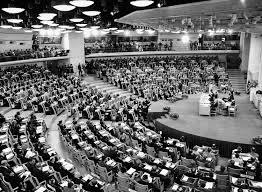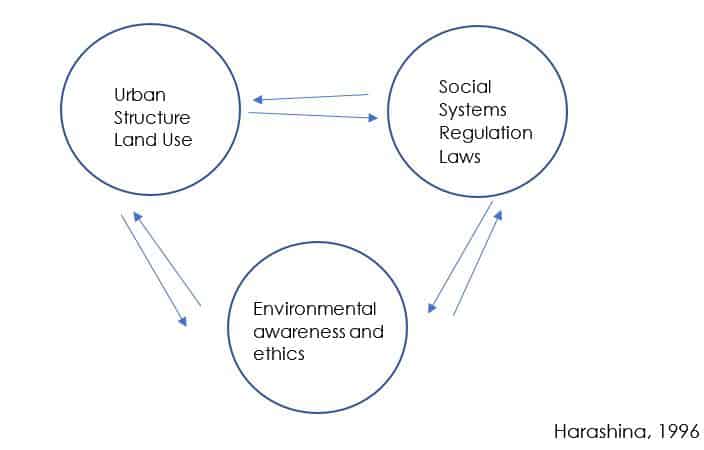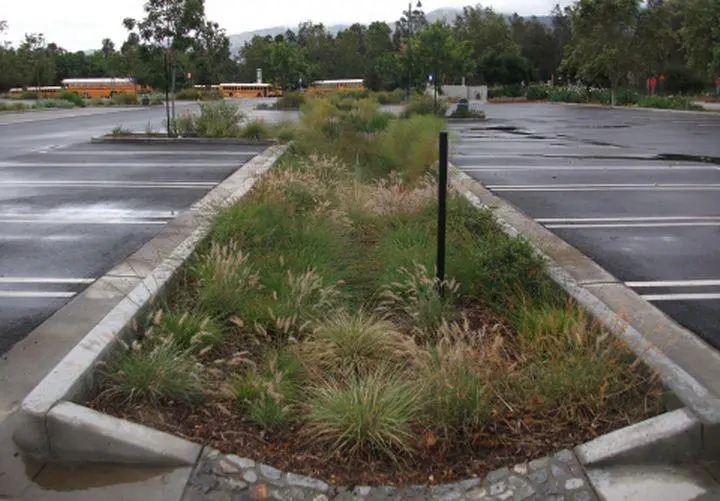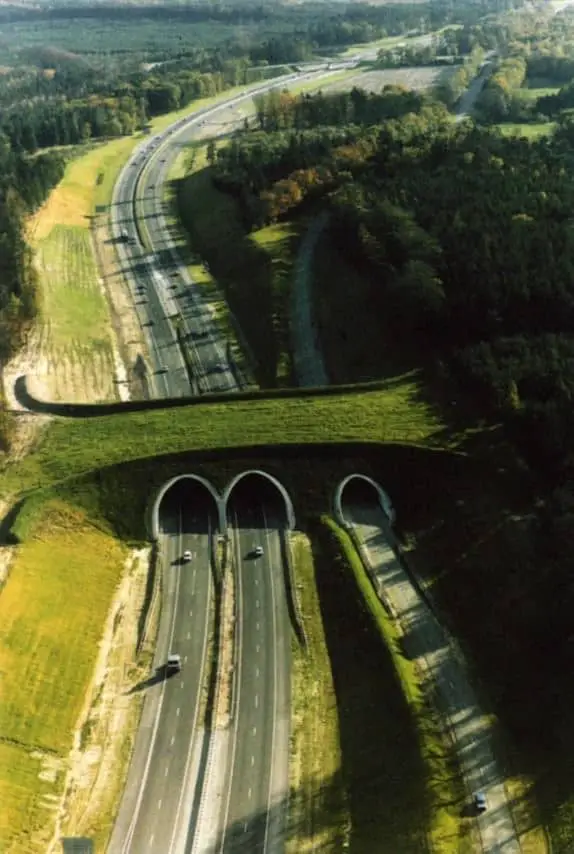Abstract – Urban planning is human’s way of recreating the world. It is the process of decision making that affects our life and the environment immensely. We live in this world designed by us, humans, but with little considerations to our previous home; nature. And that has costed us big in terms of huge environmental challenges we face today. The only way forward is the consideration of environment as a major stakeholder in planning decisions and policies to make a world for us and the earth’s fellow creatures.
Introduction – Importance of Environment
Humans are the children of the earth, no matter how much we prioritise wealth, fame or success; nature will always be our home. Therefore, protection of the environment, from any potentially harmful human activity, is essential to sustain our lives.
Urban development is one such activity that causes immense disturbance to the environment. The complete makeover of the natural environment threatens the ecosystem that has took millions of years to form and has helped our species to evolve. In the last century, we saw, with the rise of industries and population, a degradation in the natural environment. There was economic growth, rise of capitalism, two world wars fought and in the midst of winning, the nature was ignored. The result? Look at the world. Climate is heating up. About 500 species have gone extinct. And we are taking up more and more natural space every year.
However, the solution is not to stop the development which is required for the increasing population. There is already a lot of shortage of housing in all major cities of India. What we can do, is plan sustainably. Here’s where environmental planning comes in.

In the 1970s, people started to become aware about how urban activities degraded the natural environment. The key events during this time were the 1972 United Nations held a Conference on the Human Environment and the release in 1987 of the Brundtland Report: The World Commission on Environment and Development “ Our Common Future” (Brundtland, Ahalid et al. 1987).
The Brundtland Report insisted on “a new era of economic growth, one that must be based on policies that sustain and expand the environmental resource base”. This report made people oriented towards sustainable economic development so that economic growth doesn’t deplete natural resources or harm the environment. It defined sustainable development as:
… development that meets the needs of the present without compromising the ability of future generations to meet their own needs.
Related Articles:
- Importance of Urban Planning
- Environmental Planner | Roles, Responsibilities & Future Prospects
- Regional Planning – Need, Importance & Implementation
Environmental Planning is the decision-making process which takes into account the natural environment (natural resources, wildlife, and natural hazards), working landscapes (farms, forests, and lands from which minerals are extracted) and public health (air and water pollution, toxics and waste disposal) and the built environment (Daniels, 2009).

Environmental planning shapes land use structure which in turn shapes social systems. This change in social system induces awareness and which in turn increases participation and collaboration in the planning process. This participation and awareness amongst citizens, is highly required now more than ever. Through awareness, people can take small measures in their day-to-day activities to protect the environment.
Environment Protection is focused on three aspects – Blue, Green and Brown. Blue is about the conservation of water, natural wetlands and marine ecosystems. Green includes the biodiversity part of the environment. And Brown refers to the protection of humans from environmental degrading human activities like air pollution.
Blue
Water is essential to life. All living beings need water to survive. However, today, only a few percent of people have access to safe drinking water. Poor planning policies that didn’t restrict flow of un-treated sewage into the natural water bodies have caused immense trouble to the aquatic ecosystems. A lot of people can only access that polluted water, that they drink and cook food with. Due to climate change and increased intensity of rainfall, water catchments have become vulnerable. Urbanisation, in turn, have created big issues for maintaining the quality and quantity of surface water runoff (Goonetilleke et al. 2005).

All these problems caused by urbanisation requires planning interventions that takes care of the natural water bodies.
The recent developments of decentralised waste-water management, rain-water harvesting, use of bioswales, etc, has made a huge difference in the conservation of these water bodies. These developments are more or less the result of thoughtful environmental planning and intricate considerations of the impacts of planning decisions.
Related: Environmental sustainability and climate change, Environmental degradation
Green
The green part of the environment, the biodiversity is paying the price of one of the biggest problems caused by urbanisation- climate change. The recent forest fires in the Amazon and Australia have killed thousands of animals, destroying a big ecosystem of the world.

However, there have been numerous establishments of national parks, wildlife sanctuaries and even eco-sensitive areas to protect and conserve wildlife. But, instead of putting these ecosystems into small pockets. Planning should be done, considering these creatures as equal as humans and giving them the equal share as much as possible. For example, building wildlife crossings wherever there’s development interfering the natural habitat.
Read about: What is Environmental Planning?, Ecosystem Valuation & Services , Importance of Environmental Education
Brown
The human activities which pose danger to humans. There are so many. Take our lifestyle, for instance, that has been built over the last century. Long commuting hours to work, prolonged sitting, less physical activity, all these problems (where planning can intervene) has caused numerous deaths, through numerous diseases. Moreover, poor household conditions, bad sewage planning have resulted into millions of infectious diseases in all over the world. Problems like air pollution, which affect people living in highly car-centric planned cities (which is almost every city), causing breathing problems, lung cancers and low mental health.
Cities like Copenhagen are great examples of successful planning interventions to reduce car pollution by providing a healthier option: cycling. The city planning has been done in a way that offers favourable cycling conditions, dense areas with facilities at proximity with well-designed system of cycle tracks.
Conclusion
The environment we live in, is very sensitive. It has been dealing with whatever humans are throwing at it for years and years. Now’s the time to give back, to care about our home. All the problems, we are facing nowadays, are almost all caused by inconsiderate human activities. Which are affecting, ultimately humans only. Climate change, resource depletion and pollution are big cause of physical and mental un-wellness of humans. All these issues wouldn’t even exist in the first place if relevant environmental considerations were made at the time of planning. Considerations of the environment impacts at the time of planning and the adoption of sustainable development is the need of the hour.
Environmental planning requires:
- All plans and policies to go through an environment impact assessment before their implementation.
- Restoration and rehabilitation plans for degraded areas.
It’s important to understand the interrelationships among physical, economic and social environment. There are multiple objectives of every state. A community may achieve certain economic goals conflicting with its environmental goals. These trade-offs are unavoidable.
Author’s Bio
Janhvi is an undergraduate sophomore (Bachelor of Physical Planning) at School of Planning and Architecture, New Delhi. Born in New Delhi, grew up in Haridwar, she advocates for sustainable development, participatory planning and is a big admirer of the work of Danish urban designer Jan Gehl.
References:
- Brundtland, G. H., et al. (1987). Our Common Future: The World Commission on Environment and Development. Oxford, , The World Commission on Environment and Development.
- Daniels, T. L. (2009). “A Trail Across Time: American environmental planning from City Beautiful to sustainability.” Journal of the American Planning Association 75(2): 178-192.
- Forester, J. (1999). The Deliberative Practitioner: Encouraging participatory Planning process. Cambridge, Massachusetts, MIT Press.
- Jones, C., et al. (2005). Introduction. Strategic Environmental Assessment and land Use Planning: An international evaluation. C. Jones, M. Baker, J. Carter et al. London, Earthscan.
- James C. Barron
- Proceedings, Annual Meeting (Western Agricultural Economics Association) Vol. 43 (July 19-22, 1970), pp. 268-270
- Harashina, Sachihiko (1996), “Environmental Planning on Urban Level”. Discussion Paper 96-6. Tokyo: Dept. of Social Engineering, Tokyo Institute of Technology.